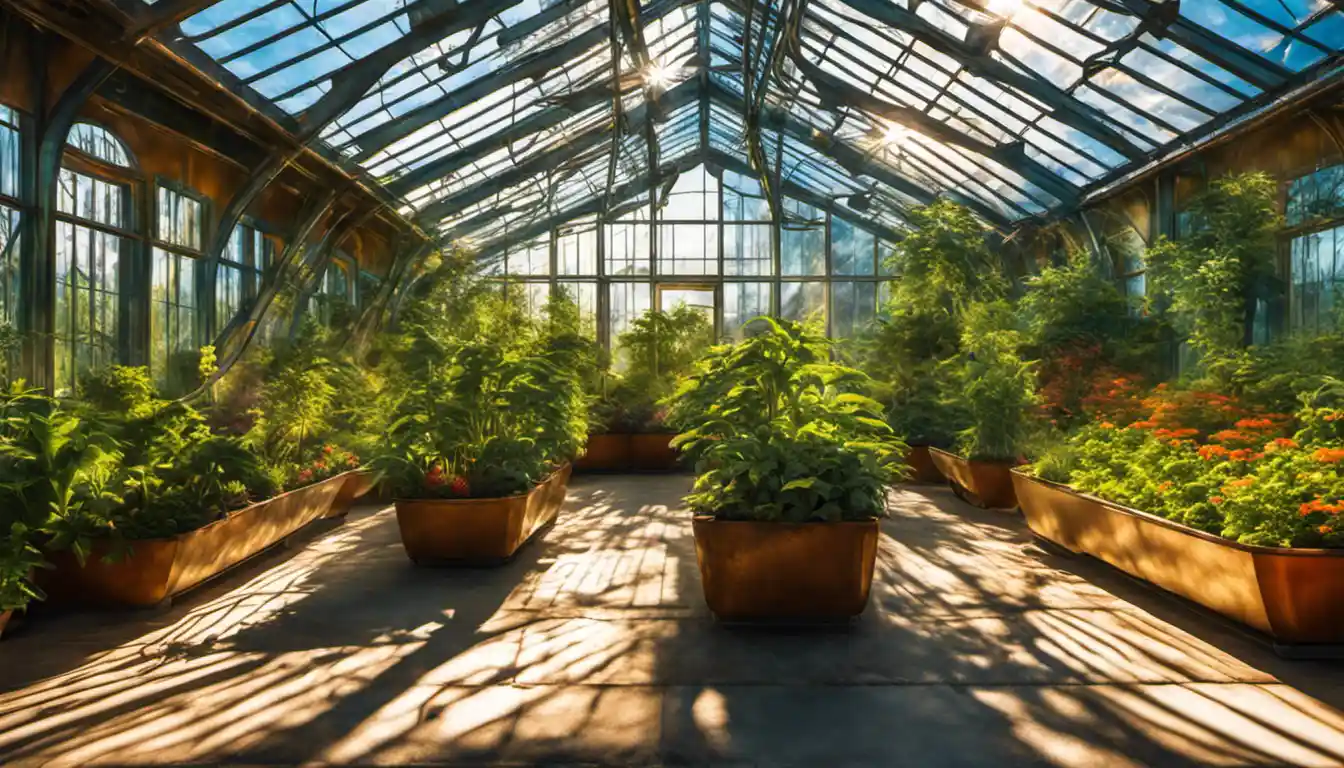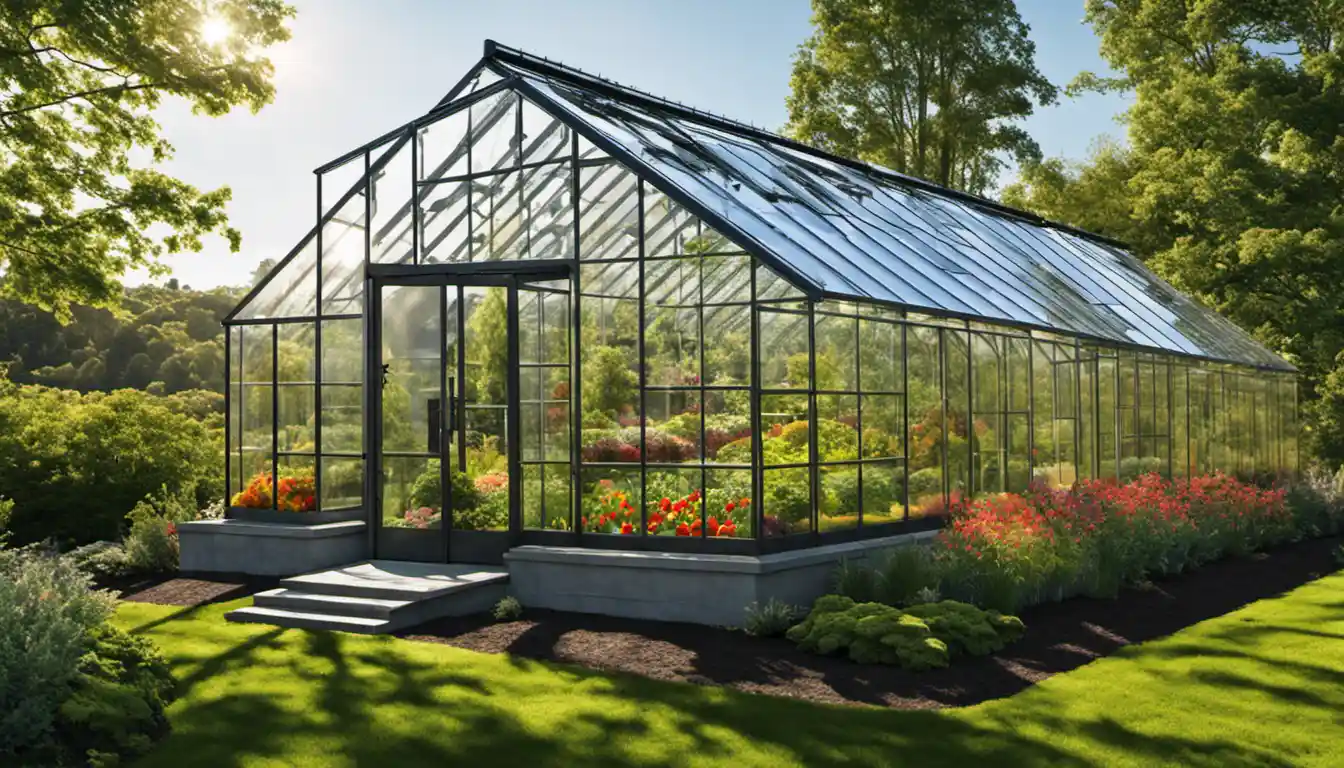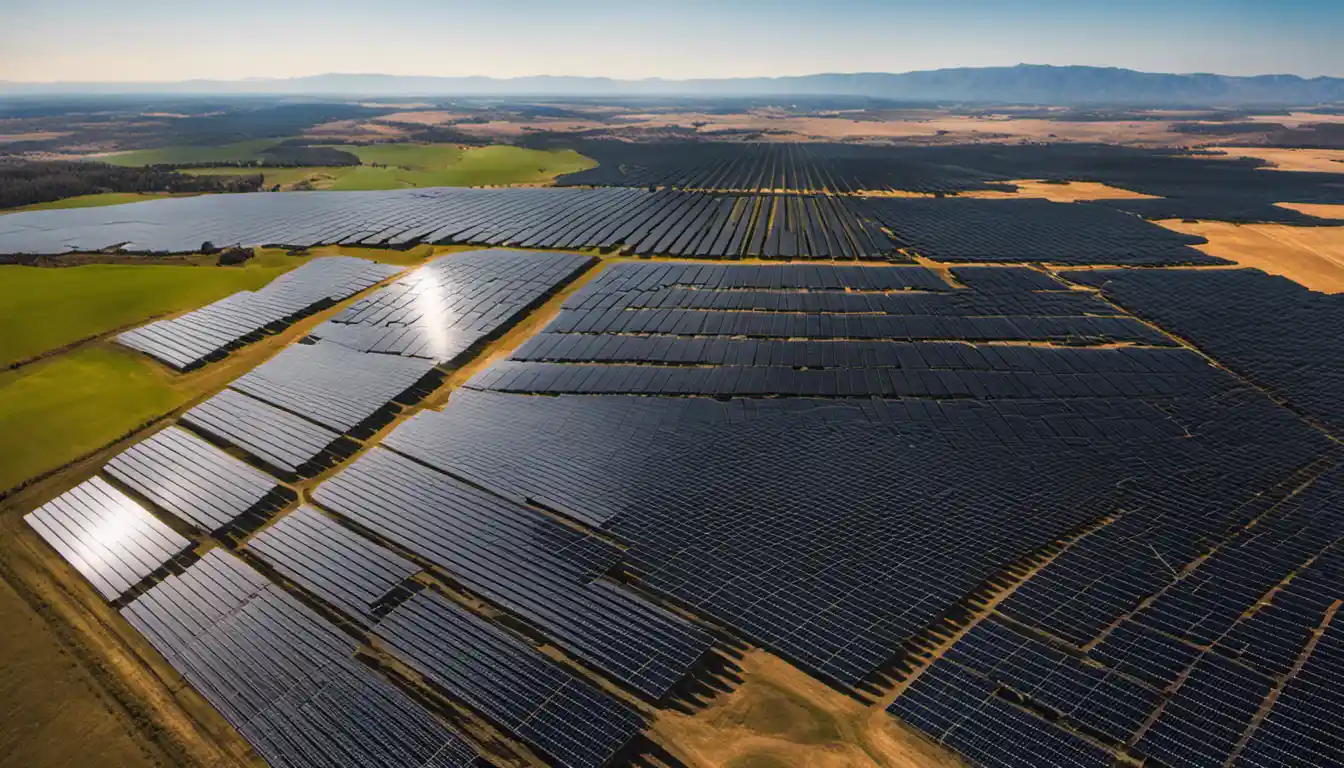The Concept of Solar Greenhouses
Solar energy that enters a greenhouse is absorbed by the plants, soil, and other objects inside. The energy is then converted into heat, subsequently warming the air, soil and plants. Due to the greenhouse’s design and materials, this heat is trapped inside, creating a warmer internal environment.
Definition of a Solar Greenhouse
A solar greenhouse, in all essence, is not your typical greenhouse. Through effective planning and architectural design, a solar greenhouse harnesses solar energy to provide a conducive environment for plant growth year-round, irrespective of the outdoor climatic conditions.
Relevance and Importance of Solar Greenhouses in Modern Agriculture
In the age of sustainability and eco-friendly practices, solar greenhouses have become a cornerstone in modern agriculture. They offer an efficient solution to farmers, increasing plant yield while using renewable energy sources. But it’s not just farmers reaping benefits; solar greenhouses can be a mini oasis in your backyard too, offering fresh produce right at your doorstep.
The Greenhouse Effect: What Is It and Why Is It Important?
Understanding the greenhouse effect helps to comprehend what happens to solar energy inside the greenhouse.
The Mechanics of the Greenhouse Effect
Just as a blanket keeps you warm on a cold winter’s night, the Earth’s atmosphere maintains our planet’s heat, ensuring it’s livable for us humans. This is the greenhouse effect: sunlight passes through the atmosphere, warming the planet. While some of this heat escapes back into space, some is retained, creating a heat balance critical for ecological stability.
Within a greenhouse, the same principle applies. Light, primarily in the form of short-wave solar radiation, penetrates the transparent greenhouse walls. However, when this light hits the objects inside — such as plants and earth — it’s absorbed and re-emitted as long-wave infrared radiation or heat, which cannot escape the greenhouse structure, hence warming the interior.
Addressing Misconceptions about Greenhouse Effect
While the greenhouse effect has gotten a bad rap due to its association with climate change, it’s crucial to note that it’s a completely natural phenomenon essential for our planet’s survival. Without it, the Earth’s temperature would plunge dramatically, making it uninhabitable.
The Crucial Role of the Greenhouse Effect in Sustaining Life
In a nutshell, without the greenhouse effect, life as we know it would cease to exist. It’s as vital as the air we breathe. It maintains Earth’s average temperature, enabling the survival of humans and other life forms. Similarly, in a solar greenhouse, it allows for year-round growth, regardless of the external climate.
The Crucial Role of Solar Energy in a Greenhouse
So, what happens to solar energy inside the greenhouse? To answer that, we need to understand how solar energy interacts within the greenhouse.
How Solar Energy Enters and Interacts within the Greenhouse

When sunshine hits the greenhouse, its walls and roof allow the short-wave radiation to pass through. This light is then absorbed by the plants and the soil inside, which convert it into long-wave radiation or thermal energy — heat. This transformation process is a game-changer as these longer wave radiations can’t escape the greenhouse, creating a warmer environment beneficial for the plants’ growth.
Solar Energy Conversion: How Does It Occur in a Greenhouse?
The most magical part of the solar greenhouse process is the conversion of light into heat. As the sunlight filters through the greenhouse, it’s absorbed by everything inside – from the plants to the soil. These absorbed rays alter their wave frequency, transforming into heat energy. So, when we tell you your household plant enjoys a little sunbathing, we’re not kidding!
Greenhouses and Solar Energy: The Varieties
Greenhouses using solar energy come in various designs and models – it’s not a one-size-fits-all scenario. Let’s take a look at some variations.
To fully understand your options and gain a thorough understanding of what is solar energy, then you should explore solar power’s intricacies, their applications, and their integration with different greenhouse options.
Passive Solar Greenhouses: An Overview
The crème de la crème of greenhouses is the passive solar greenhouse, especially for colder climates. It uses the sun’s orientation and site location alongside natural materials to capture and store heat, making it energy-efficient and cost-effective.
Solar Panels for Greenhouses: The Importance and Function
Solar panels in greenhouses can serve dual functions: provide shade and produce power using solar energy. The generated power can be used for various things like temperature control equipment, irrigation systems, and lighting, significantly reducing your greenhouse’s carbon footprint.
Solar Generators for Greenhouses: Understanding Their Role
Solar generators play an essential role in scenarios where power use exceeds what your solar panels can produce or in regions where sunlight is limited. By storing excess energy generated on sunny days, solar generators can meet the power needs of your greenhouse even on cloudy days or at night.
So, it looks like regardless of what your solar greenhouse needs are, there’s a suitable option strategized to enhance energy efficiency and sustainability.
Examining the Benefits of Greenhouses Using Solar Energy
The first two things that come to mind when talking about solar energy’s benefits are ‘environmental impact’ and the ‘cost factor.’ But honestly, that’s the tip of the iceberg!
The Environmental Impact: Eco-Friendliness of Solar Energy Greenhouses
There’s no denying that solar energy is one of the greenest, cleanest energy sources that exist. By adopting solar greenhouses, you are playing your part in reducing carbon emissions, one of the primary culprits causing climate change.
The Cost Factor: Is Solar Energy Cost-Effective?
While the setup cost of a solar greenhouse might be intimidating initially, from a long-term perspective, solar energy provides significant savings on electricity bills. The sun’s energy is free, and solar panels require minimal maintenance, resulting in lower running costs in the long-run.
Energy Independence: How Solar Greenhouses Contribute to Energy Autonomy

With a solar greenhouse, you aren’t just growing plants; you’re cultivating energy independence. By utilizing solar energy, you’re less reliant on the grid, protecting you from fluctuating energy prices and supply interruptions.
Lengthened Growing Season: Exploiting the Advantages
With a solar greenhouse, winter is but a season outside your door. Once inside, the warm, stable climate allows your plants to grow throughout the year.
The Versatility and Scalability of Solar Greenhouses
Solar greenhouses come in different types and sizes. You can start with a small backyard setup and gradually expand as you become comfortable with managing it.
Productivity and Maintenance: Why Solar Greenhouses?
A solar greenhouse can produce healthier and more bountiful yields since you can control the environment. What’s more, solar panels require minimal maintenance, making it a win-win situation.
What Causes the Greenhouse Effect?
We’ve understood what happens to solar energy inside the greenhouse, now, onto what causes the greenhouse effect.
Natural Processes Leading to Greenhouse Effect
Naturally occurring greenhouse gases like carbon dioxide, methane, and water vapor trap some of the sun’s heat, preventing it from escaping back into space, and thus, warming the earth.
Human Activities Amplifying the Greenhouse Effect
Human activities, like burning fossil fuels for electricity, heat, and transportation, have dramatically increased concentrations of these gases, enhancing the greenhouse effect and leading to a rise in Earth’s average temperature, or global warming.
How Does Solar Energy Reduce Greenhouse Gases?
Transitioning to solar power from fossil fuels substantially reduces greenhouse gas emissions. Since solar energy harnesses the sun’s power – a renewable source – it eliminates the need to burn fossil fuels, thereby reducing the emission of harmful gases into the atmosphere.
The Process and Impact of Utilizing Solar Energy

Solar panels capture the sun’s energy and transform it into electricity through a process called photovoltaics. When we use solar power to run our homes or greenhouses, we reduce our reliance on fossil fuels, which leads to a decrease in greenhouse gas emissions.
Aligning Solar Energy Usage with Lower Greenhouse Gas Emissions
When we install solar panels on a greenhouse, we directly influence the plant’s growth and indirectly contribute to reducing greenhouse gases. It’s a small but instrumental step towards creating a cleaner environment for future generations.
Solar Energy Solutions for Greenhouses: Which Is Better?
The answer to “which is better?” will always depend on the specific requirements of your greenhouse, its location, and your budget. Passive solar greenhouses, solar panels, and solar generators all have their unique advantages and applications.
Comparing Passive Solar Greenhouses, Solar Panels, and Solar Generators
Passive solar greenhouses are excellent for colder climates, solar panels are great for daily energy production, and solar generators are ideal for storing excess energy for future use. Your optimal solution could even be a combination of these options.
Navigating the Right Choice Based on Specific Needs
The key is understanding your needs in terms of power consumption, sunlight availability, climatic conditions, and capacity of growth, then aligning these factors with your budget to determine the best solution.
A Dive into Frequently Asked Questions
There’s a lot to unpack when it comes to understanding what happens to solar energy inside the greenhouse. Let’s answer some frequently asked questions.
How Many Solar Panels Are Needed to Power a Greenhouse?
The number of solar panels needed depends on the size of the greenhouse and your specific power requirements. For an accurate estimate, it’s recommended to consult with a professional who can assess your needs and provide advice.
The Worth of Solar Greenhouse: Is It Worth Your Investment?
A solar greenhouse is an excellent long-term investment. It allows for year-round cultivation, helps reduce carbon footprint, and decreases long-term energy costs.
Options for Heating a Greenhouse Economically
Aside from solar power, there are various ways to heat a greenhouse without breaking the bank, such as using compost heaps, thermal masses, or even heat-loving plants.
In wrapping up, understanding what happens to solar energy inside the greenhouse isn’t nuclear physics. It’s acknowledging the simple truth that our sun is the greatest power supplier in the known universe and seeing how we can harness this energy optimally.



